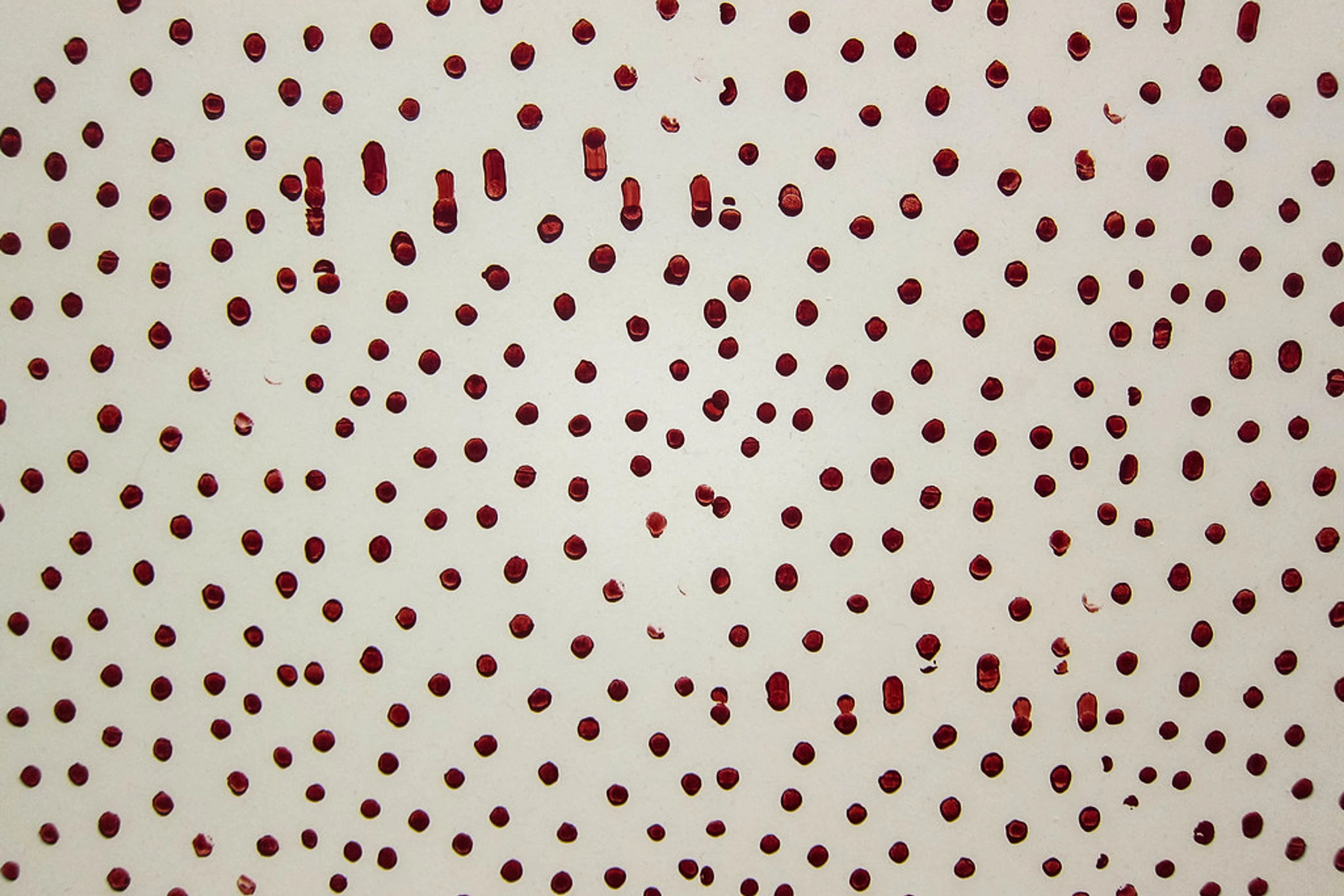
Unlocking Abstract Art: Your Personal Guide to Connection & Meaning
Confused by abstract art? This personal, engaging guide demystifies its history, forms, and profound value. Discover practical tips to forge your unique connection and unexpected joys.
Decoding Abstract Art: A Personal Guide to Finding Meaning & Connection
I remember my first real encounter with abstract art. I was probably in my late teens, visiting a museum, and I stood in front of a canvas that looked like a giant, colorful splat. My immediate, very sophisticated thought was, "Well, my cat could do that." I chuckled, felt superior for about two seconds, and then… felt utterly bewildered. Was I missing something? Was everyone else pretending? It was a moment of profound artistic inadequacy on my part, feeling like everyone else was in on a secret joke I hadn't been told, a feeling that unexpectedly began to unravel. It was a moment that transformed into a deeply personal and transformative journey.
If you've ever felt that disconnect, that little flicker of frustration or even ridicule when faced with a painting that seems to defy logic, let me tell you, you are absolutely not alone. Abstract art can be intimidating. It doesn't give you a clear story, a recognizable landscape, or a portrait of someone you might meet on the street. It demands something different from us, something I've slowly, perhaps begrudgingly at first, learned to appreciate. The beautiful, liberating truth of abstract art, I've discovered, is that there isn't a single "right" answer. This very freedom to interpret became my personal breakthrough, shifting the entire experience from a puzzle to solve into an adventure to embark upon.
By the end of this guide, you'll have practical tools to approach abstract art with confidence and curiosity, understanding its rich history, diverse forms, and how to forge your own unique, deeply personal connection with it.
The Elephant in the Room: "My Kid Could Do That!"
Let's just address it, shall we? That often-whispered, sometimes shouted, sentiment that abstract art is just... easy. A child's play. And honestly, for a long time, I harbored a similar secret suspicion. But here's the thing: while some abstract pieces might appear simple or spontaneous, they are rarely truly so. The perceived "randomness" is often a carefully cultivated illusion, designed to evoke a particular feeling or challenge perception, rather than indicating a lack of thought or skill. Consider artists like Piet Mondrian or Wassily Kandinsky, who honed their craft for years, mastering traditional techniques like classical drawing and representational painting before consciously choosing to break those conventions.
This realization, that they had to master the 'rules' before they could break them, was a profound 'aha!' moment for me. I distinctly remember scoffing at a geometric abstract piece, convinced it was just arbitrarily placed shapes. Then, a friend, an art history student, patiently explained Mondrian’s early representational 'tree' series visually transformed into his iconic, purely abstract grids. It suddenly clicked that their abstraction wasn't born of inability, but of a deeply informed and rebellious vision. It made me feel a bit foolish for my earlier dismissals, perhaps, but also incredibly enlightened. This wasn't a rejection of skill; rather, it was a profound, intentional choice. Driven by a desire to explore deeper truths, spiritual realms, or the pure essence of form and color beyond mere representation, artists sought to distill reality, not merely depict it. Mastery of traditional techniques, such as anatomy, perspective, and color mixing, often provides abstract artists with the fundamental understanding needed to intentionally distort, simplify, or manipulate elements. This demonstrates not a lack of skill, but a conscious choice to break visual rules with purpose.
Think of it like this: anyone can mix ingredients in a bowl. But only a skilled chef can take those same basic elements and create a dish that sings, that evokes memory, that transports you. Abstract artists, at their best, are master chefs of visual language. They understand composition, color theory, and the raw power of a brushstroke in a way that goes far beyond random daubs. It’s not about what they painted, but how they painted it (through their unique brushwork, texture, and composition), and why (driven by emotion, philosophy, or a desire for pure expression). Even in seemingly chaotic works, like those by Jackson Pollock, an underlying rhythm, process, and clear intention exist. It's about controlled chaos, not pure chance. I once saw a documentary about Pollock's technique, and it transformed my view – it was less about flinging paint and more about a precise, almost choreographic engagement with the canvas.
Shifting Your Perspective: It's Not a Puzzle to Solve
This was my biggest hurdle. I approached abstract art like a riddle, desperate to find the "hidden meaning" or the "true subject." I'd stand there, eyes narrowed, trying to force a landscape or a person into the swirls and blocks of color, inevitably failing and feeling foolish. I even remember one time, trying to discern a hidden duck in a particularly abstract blue blob, only to leave feeling utterly defeated and mildly embarrassed. "Why can't I just get it?" I'd wonder, frustrated.
The breakthrough, for me, came when I stopped trying to solve it and started experiencing it. Abstract art isn't necessarily meant to represent something tangible. It’s often about emotion, energy, rhythm, or a raw aesthetic experience. It's more akin to listening to a piece of instrumental music than reading a novel. You don't try to find a literal story in a symphony, do you? You let the notes wash over you, you feel the shifts in tempo and dynamics, and you allow it to evoke something within you. Abstract art works similarly. This shift fundamentally changed how I engaged with it. And understanding its origins can deepen that experience even further, connecting the "what" you see with the profound "why" behind it. So, let's peel back the layers and see what prompted this radical departure.
The Roots of Abstraction: A Historical & Philosophical Journey
But what prompted this radical departure? To truly appreciate abstract art, it helps to understand its origins. This section always felt like a dense textbook chapter to me, until I started seeing the threads connecting these big ideas to the art itself. It was less about memorizing dates and more about understanding a profound human need for new expression.
The Great Unshackling: Photography & 'Art for Art's Sake'
The early 20th century saw artists grappling with profound societal changes. The rise of photography could now capture reality with stunning accuracy, freeing painters from the historical task of pure representation. This liberation coincided with a burgeoning philosophical current: the idea of "art for art's sake" (also known as aestheticism). This radical departure championed art's intrinsic value and aesthetic qualities over its narrative, moral, or utilitarian functions, allowing art to be truly autonomous. This philosophy, championing art's inherent worth and freeing it from the demands of direct representation, directly paved the way for artists to shift their focus purely to visual elements and emotional impact, leading directly to abstraction. It was like art finally exhaled and decided to be itself, unapologetically.
A World in Flux: Societal Shifts & New Ways of Seeing
Beyond these artistic shifts, the broader socio-political climate also played a crucial role. The rapid industrialization and urbanization of the late 19th and early 20th centuries, coupled with the disillusionment and trauma of major conflicts like World War I and II, fostered a deep hunger for non-material expression. Reality, for many, had become too harsh, too shattered to be merely depicted; artists sought a deeper, more universal truth that realism seemed unable to convey. New psychological theories (like Freud's exploration of the subconscious, and Jung's ideas of collective unconscious and archetypes) offered artists a new vocabulary to express inner worlds, dreams, and subjective experiences, moving beyond external reality into the complex landscape of the human psyche.
This exploration of the subconscious deeply influenced movements like Surrealism, which, while often representational, paved the way for accepting internal, dreamlike realities as valid artistic subjects, thus legitimizing radical departures from external depiction. Furthermore, movements like Orphism, championed by artists like Robert Delaunay, actively dissolved figures into vibrant color planes, often referencing music to evoke rhythm and harmony, and exploring "simultaneous contrasts" of color. Similarly, early influences of Futurism, with artists like Giacomo Balla, celebrated speed, technology, and dynamic motion through fragmented forms, aiming to capture the energy of modern life through simultaneous viewpoints and the depiction of movement itself. These movements, alongside others, contributed to the rich tapestry of early 20th-century abstraction, showcasing a widespread artistic hunger for new visual languages. It's also worth noting the significant impact of non-Western art, particularly African masks and Japanese prints, on early modernists like Pablo Picasso and Henri Matisse. Their bold forms, simplified lines, and departure from traditional European perspective offered radical new ways of seeing and representing the world, directly inspiring the breaking of conventional artistic rules and paving the way for abstract explorations.
Pioneers and Purpose: The Spiritual and Universal Seekers
Yet, this radical shift wasn't met with universal acclaim. Early abstract works often faced ridicule and accusations of lacking skill, precisely the 'my kid could do that' sentiment many still feel. Think of the outrage surrounding the Salon des Refusés in 1863, where avant-garde artists, whose works were rejected by the conservative Salon, showcased their pieces to a bewildered public. While the Salon des Refusés primarily featured Impressionist and Realist works (which were still representational), it set a powerful historical precedent: any radical artistic departure often faces initial resistance, bewilderment, and even hostility. This historical precedent serves as a potent reminder that groundbreaking art, regardless of its specific style, frequently faces initial bewilderment before eventual acceptance, or at least, begrudging recognition. It was a challenging period for both artists and audiences, requiring a re-education of the eye and mind – a re-education I certainly struggled with at first. But knowing that my initial 'my kid could do that' reaction wasn't unique, but part of a larger historical struggle for acceptance, surprisingly made me feel less alone in my bewilderment.
Influenced by movements like Theosophy (a spiritual philosophical movement emphasizing mystical insight and universal truths), pioneers such as Wassily Kandinsky, Kazimir Malevich (who developed Suprematism, exemplified by works like his stark "Black Square," seeking pure feeling and spiritual liberation through geometric forms), and Piet Mondrian (a key figure in De Stijl, aiming for universal harmony and spiritual order through primary colors and orthogonal lines) weren't just "splattering paint"; they were seeking a pure visual language, a way to express inner emotions, spiritual truths, or universal harmonies that couldn't be depicted realistically. They believed art could transcend the material world. For me, learning about this historical and philosophical background was like finding a missing piece of a puzzle; it connected the dots between baffling splats and profound intentions.
For example, Wassily Kandinsky, often credited with painting the first purely abstract works, felt that colors and shapes had their own "spiritual vibration." He believed that lines, forms, and hues could interact to evoke feelings directly, much like music, without needing a recognizable subject. Understanding this intention — a move away from representation towards pure expression — is key.
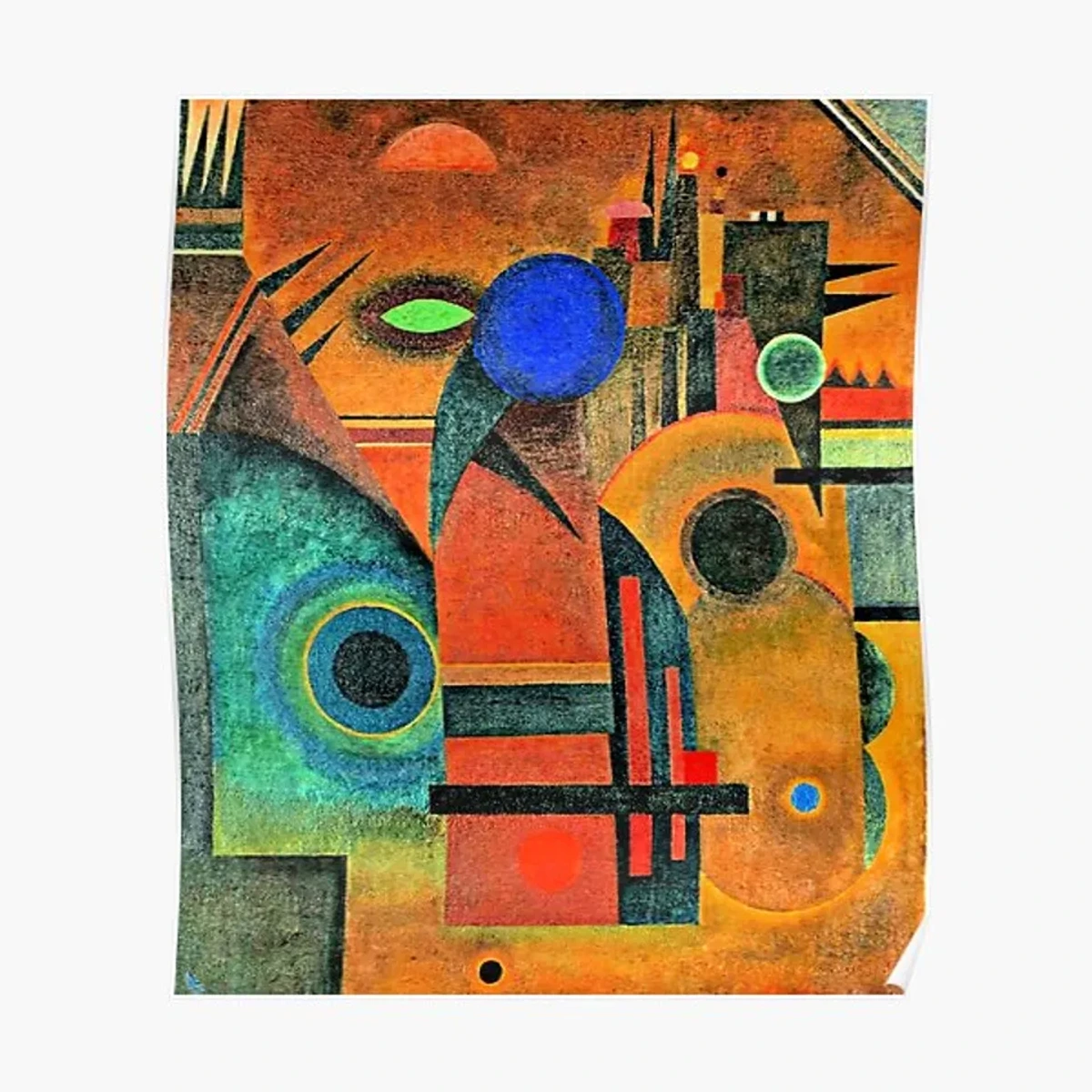
The Secret Language of Abstract Art: Formal Elements
Ever wondered what artists are really "saying" when they choose to paint abstractly? It begins with understanding the basic building blocks, the very tools the artist manipulates to create meaning or evoke emotion. These are the formal elements of art, and once you start noticing them, it's like learning a secret language that enhances your appreciation. I used to think I needed a dictionary, but it turns out, I just needed to open my eyes a little wider.
- Lines: Think about how lines guide your eye. Are they thick or thin, jagged or flowing? Do they create boundaries or suggest movement? They can convey energy, stillness, or even emotion. I remember one painting where a single, sharp diagonal line cut through the canvas, and it immediately made me feel a jolt of unexpected tension – a powerful, unspoken message.
- Shapes: These can be geometric (squares, circles, triangles) or organic (free-form, natural shapes). How do they interact? Do they create balance, tension, or a sense of chaos? Looking at a piece by Piet Mondrian, the way his precise squares and rectangles interact suddenly became less about geometry and more about a quiet, ordered harmony, almost a silent conversation between forms.
- Form: While often conflated with shape, form refers to the three-dimensional quality or implied three-dimensionality of an artwork. It gives a sense of volume and mass, even on a two-dimensional surface. Does the piece feel flat, or do elements seem to recede or protrude? For instance, in some Abstract Expressionist works, the thick application of paint (impasto) creates a tangible form on the canvas, almost inviting you to touch its rugged surface.
- Colors & Value: Beyond just their hue, consider their saturation (intensity) and value (lightness/darkness). How do they interact? Do they soothe, energize, or disturb? Do they sing or whisper? I once saw an abstract work dominated by electric blues and vibrant oranges, and it felt like a jolt of pure joy – the colors themselves became the emotion, unfiltered. Value, the range from pure white to pure black, is critical for creating depth, contrast, and mood.
- Texture: This refers to the perceived surface quality of the artwork. Is it smooth like glass, rough like bark, or layered like geological strata (achieved through impasto)? Texture can add depth, visual interest, and even a tactile quality. I've been mesmerized by paintings where the texture was so pronounced, it felt like a landscape map for my fingers, even though I couldn't touch it.
- Composition: This is the overall arrangement of all the elements. How does the artist organize the lines, shapes, and colors? Does it feel balanced or asymmetrical? Does it pull your eye in a certain direction? A strong composition, even in abstraction, makes the piece feel cohesive and deliberate. I used to think abstract composition was just random, but then I started seeing the careful push and pull, the deliberate placement, and realized it's a silent conversation the artist has with the canvas.
- Space: Does the artwork feel shallow or deep? Does it create an illusion of three dimensions on a two-dimensional surface? Artists use overlapping shapes, color changes, and line variations to manipulate our perception of space. In some pieces, I feel like I could fall into endless depths, while others feel like a vibrant, flat tapestry. It's all about how the artist plays with illusion.
- Movement & Rhythm: This element guides the viewer's eye through the artwork, often through repeated lines, shapes, or colors, creating a sense of flow or pattern. Does the piece feel still and contemplative, or does it hum with internal energy, pulling your gaze from one point to another? I recall a vibrant piece where interlocking curves and swirling colors created an undeniable sense of rhythmic dance, almost compelling me to sway. It was like a visual melody.
Recognizing these elements is key, as abstract artists often focus solely on their interplay, rather than using them to depict a recognizable subject.
Understanding the Abstract Spectrum: A Personal Journey
To truly navigate the sprawling landscape of abstract art, it helps to understand that it's not a monolith, all springing from the same impulse. There's a fascinating and intentional spectrum, from art that's abstracted from reality to completely non-representational pieces. Recognizing this range was a genuine 'aha!' moment for me, like suddenly understanding there's a difference between a jazz improvisation and a classical concerto – both music, but distinct in their approach. This range is a journey of deliberate artistic choice, and sometimes the lines between these categories can even blur, with artists moving fluidly between approaches. Understanding this spectrum can deepen your appreciation for the artist's journey and intent; it's often a conscious decision to move away from representation, not a lack of ability to do so. Artists might make this choice to explore universal truths, the essence of pure form, or to strip away all narrative to focus solely on aesthetic principles. This understanding transformed my view; it wasn't just 'different styles,' but a deliberate journey artists embarked upon, pushing boundaries with profound intent. It felt like unlocking a secret map to their creative process.
Beyond these two main poles, there's also a fascinating bridge category known as semi-abstract or figurative abstraction. This approach sits strategically in the middle: it maintains a clear connection to reality but pushes the boundaries of representation significantly, perhaps through extreme simplification or expressive distortion, without fully abandoning recognizable forms. While "abstracted from reality" still clearly shows the source object (e.g., a tree, a person), "semi-abstract" often blur the lines further, playing with recognizability to evoke a feeling rather than illustrate a scene. It’s a fascinating bridge between the literal and the purely abstract. Within non-representational art itself, you might encounter sub-genres like Geometric Abstraction (focused on precise, non-objective shapes) or Lyrical Abstraction (more spontaneous, expressive, and fluid).
Type of Abstraction | Characteristics | Key Examples |
|---|---|---|
| Abstracted from Reality | Starts with a recognizable subject but simplifies, distorts, or exaggerates it. The original form is still discernible but altered. | Piet Mondrian's early 'tree' series (like "The Red Tree"), Cubism (e.g., Picasso's "Weeping Woman"), early Expressionism. |
| Semi-Abstract / Figurative Abstraction | Maintains recognizable elements from reality but distorts, simplifies, or rearranges them to emphasize emotional content or formal qualities, often blurring the line between representation and pure abstraction. | Early Cubism (e.g., Picasso's "Les Demoiselles d'Avignon"), some Expressionist portraits (e.g., Kirchner's "Street, Dresden"), early works by Willem de Kooning. |
| Non-Representational | Does not refer to anything in the external world. Focuses on pure form, color, line, and texture to evoke emotion or explore aesthetic principles. | Later works by Piet Mondrian ("Composition with Red, Blue, and Yellow"), Wassily Kandinsky's later compositions, Abstract Expressionism (e.g., Mark Rothko's color fields). |
Take Piet Mondrian's evolution, for instance. His early works, like "The Red Tree," clearly show a tree form, but it's simplified. Then, he progressed to completely non-representational grids, which don't refer to anything in the external world but are about pure form, color, and line.
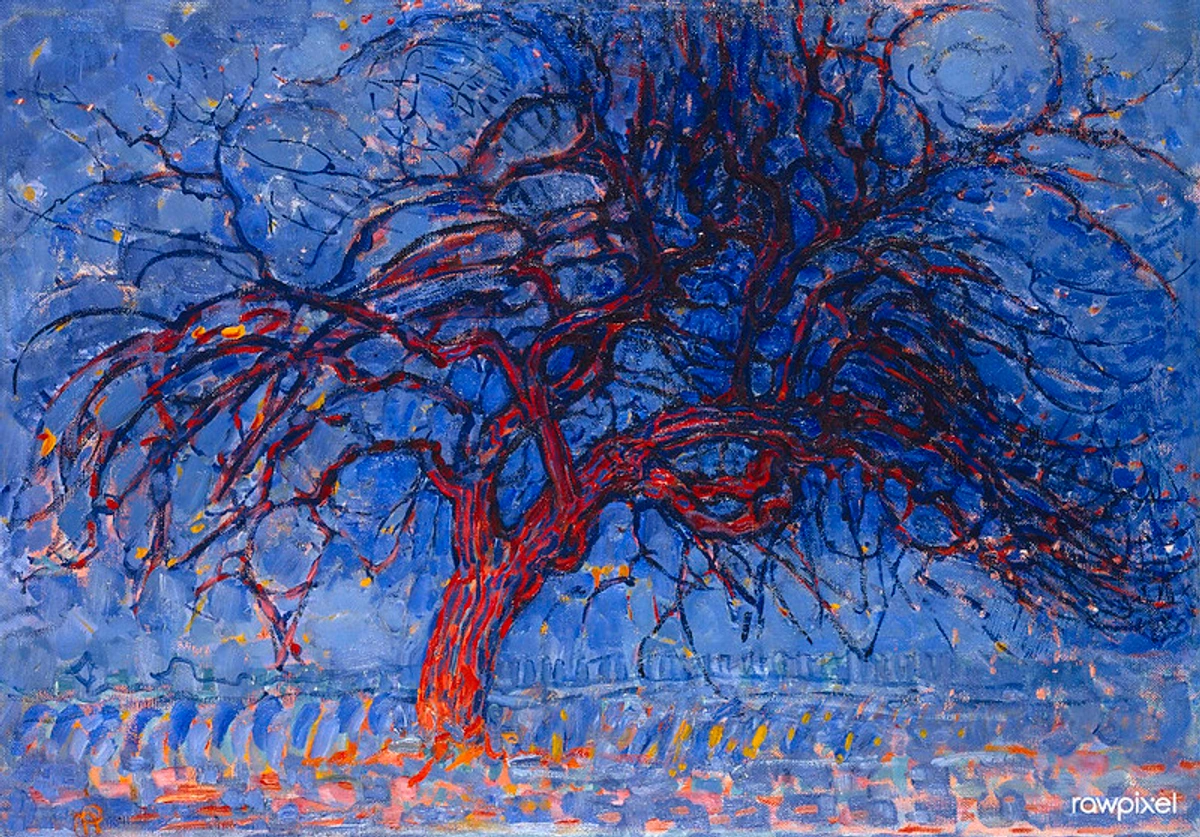
It's a fascinating journey of deliberate artistic choice.

Practical Tips for Engagement: What Finally Clicked for Me
So, how do we actually do this? How do we move from bewilderment to a deeper, more rewarding connection? These are the tried-and-true methods that genuinely transformed my experience with abstract art, making it less of a chore and more of an adventure.
Tip 1: Engage Your Senses First, Your Brain Second
When you stand before an abstract piece, take a deep breath. Forget everything you think you know about art. (Yes, I know, it sounds a bit 'woo-woo,' but trust me on this one.) Don't immediately search for meaning. Instead, allow your senses to take over. Try closing your eyes for a moment before opening them to the art, allowing your mind to clear and your senses to take over. Then ask yourself:
- What colors explode out at you? How do they make you feel? Do they soothe, energize, or disturb? Do they sing or whisper?
- What shapes do you see? Are they sharp and angular, or soft and flowing? Do they twist, stretch, or float?
- Is there a sense of movement & rhythm, or is it static? Does it seem to hum with hidden energy?
- What textures do you perceive, even if you can't touch the canvas? Is it smooth like glass, rough like bark, or layered like geological strata?
Try stepping back or moving closer; different distances can reveal new details or overall impressions, almost like seeing it for the first time again.
Let your immediate, unfiltered response be your guide. This is where the personal connection begins. For me, the first time I truly let a Rothko wash over me, it was like a silent symphony; the colors spoke a language I hadn't known I understood. It wasn't easy though; my brain kept trying to categorize, almost screaming, "But what is it?!" It was like my brain was a frantic librarian trying to file a rainbow under 'fruit' or 'furniture'. It took a conscious effort, almost a playful surrender, to just let the visual information flow, trusting that meaning would emerge, not be found. This sensory engagement is much like appreciating a piece of fine fabric, the nuanced scent of a perfume, or the complex taste of a gourmet dish – you don't intellectualize them first, you simply feel them. I also remember standing before a chaotic Abstract Expressionist work, a jumble of raw energy. My initial instinct was to recoil, but instead, I leaned in, letting the aggressive brushstrokes and clashing colors bombard me. It wasn't 'beautiful' in a traditional sense, but it evoked a powerful sense of unrest, a raw emotional landscape I recognized. It was a visceral experience, not an intellectual one.

For instance, looking at a Rothko, there’s no "thing" to identify. It's just immense fields of color. And yet, they can feel incredibly profound, melancholic, uplifting, or even spiritual. It's the sheer power of color and composition to evoke a feeling, a memory, or an introspection, purely on its own terms. Or consider Robert Delaunay's powerful abstract work, "Rhythm, Color"; its vibrant, overlapping geometric shapes invite you to simply immerse yourself in the interplay of forms and hues, allowing the visual symphony to unfold without the need for a recognizable subject, purely through sensory absorption.
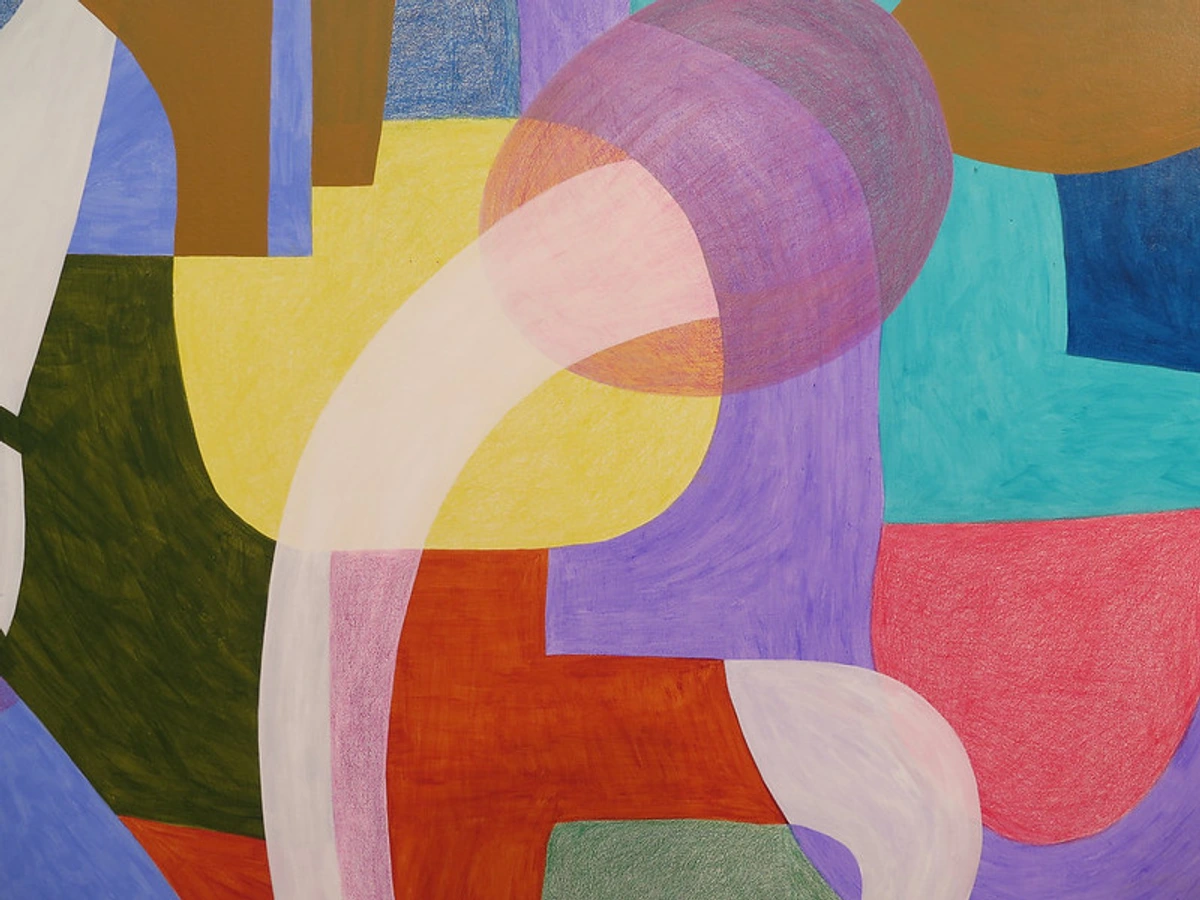
Tip 2: Listen to the Artist (If You Can)
While I advocate for personal interpretation, a little context can go a long way. The title of an abstract work, or any accompanying artist's statement, can offer a valuable hint, a starting point for your personal exploration. It's like a whisper from the creator, guiding you towards their initial intention, without dictating your final feeling. For many abstract artists, titles are carefully chosen clues, not literal descriptions. I used to scoff at titles like 'Composition No. 7' thinking, 'How uninspired!' But then I realized, that very lack of a descriptive title forces me to lean into the work itself, allowing my own meaning to emerge before any external influence. It's almost a defiant invitation from the artist: 'Don't look for what you know; look for what you feel.'
Think of how a title, even for a non-representational piece, can offer a starting point. For instance, Kandinsky's "Brown Silence" (which you saw earlier) doesn't depict a literal scene, yet the title immediately suggests a mood, a sensory experience of quiet depth. Contrast this with Picasso's "Weeping Woman". While it depicts a recognizable subject, it's a powerful example of abstraction from reality used to amplify emotion through distortion and fragmentation. Its power lies not in its realistic portrayal, but in its ability to convey profound grief. Knowing that Picasso was deeply affected by the Spanish Civil War and the suffering it caused adds a layer of understanding to the raw emotion depicted. In both cases – whether guiding emotion or suggesting a pure feeling – the artist's context gives us a unique entry point.
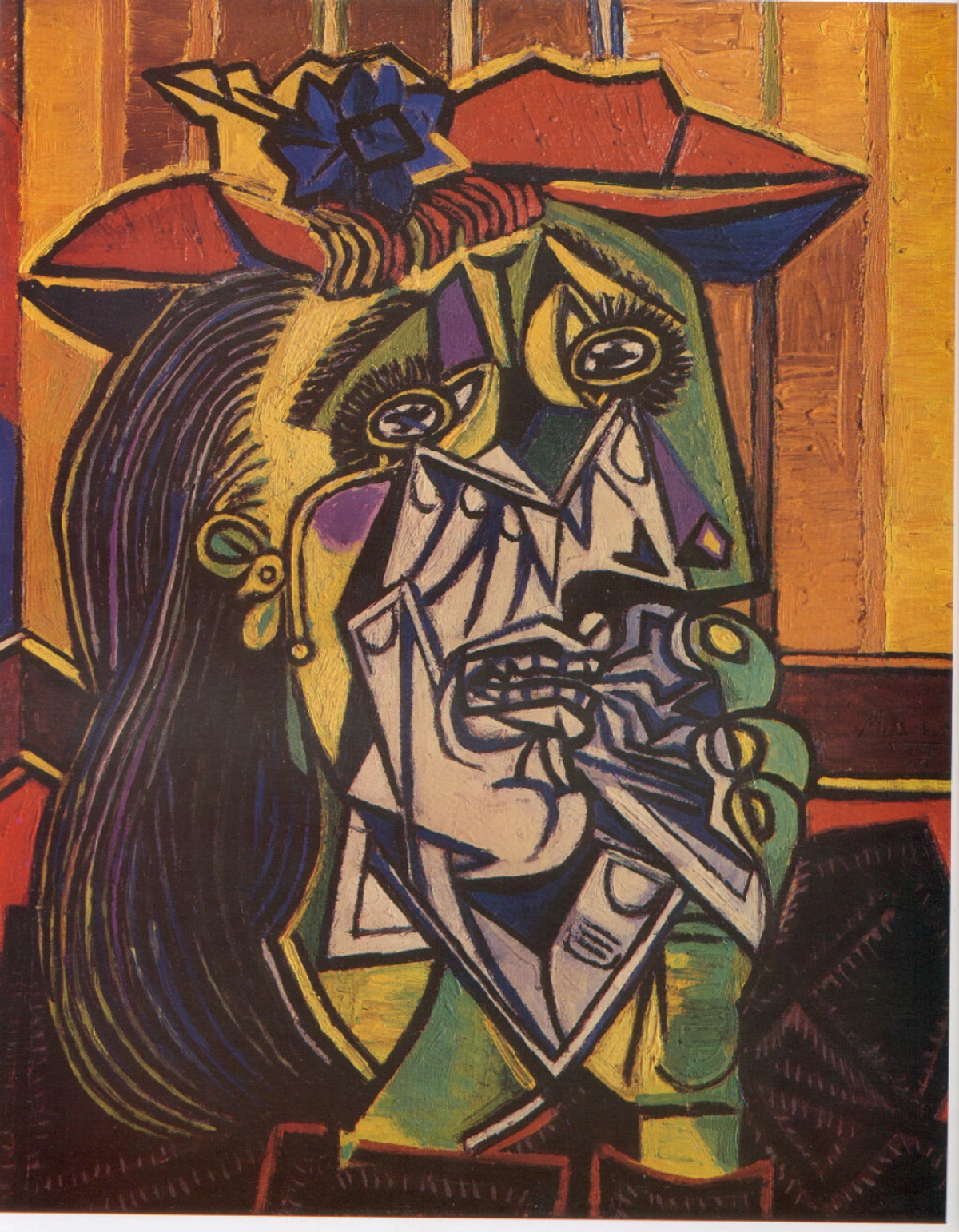
Tip 3: Embrace the "What If?" Game
This is where the fun begins. Once you've absorbed the initial sensory input, allow your mind to play. What does that particular splash of blue remind you of? Does that jagged line evoke a feeling of tension or excitement? It's not about being "right" or guessing the artist's secret meaning; it's about what the art triggers within you. This is where the work truly becomes your. I used to feel silly doing this, like I was just making things up, but then I realized: that's exactly the point! It's your brain actively engaging and creating a personal narrative. For example, I once saw a piece with a huge yellow blob and a tiny red dot, and my mind instantly went to "a giant, benevolent sun watching over a very grumpy ladybug." Silly? Maybe. Meaningful to me? Absolutely. Give your inner child permission to play. It's a bit like looking at clouds and seeing dragons or sheep. The clouds aren't really dragons, but your brain finds patterns and meaning, creating a personal narrative. Abstract art offers that same freedom. Maybe that swirl of green and yellow makes you think of a stormy sea, or perhaps a vibrant meadow at dawn. Both are valid because they are your reactions. No one's grading you, and that's the absolute best part.
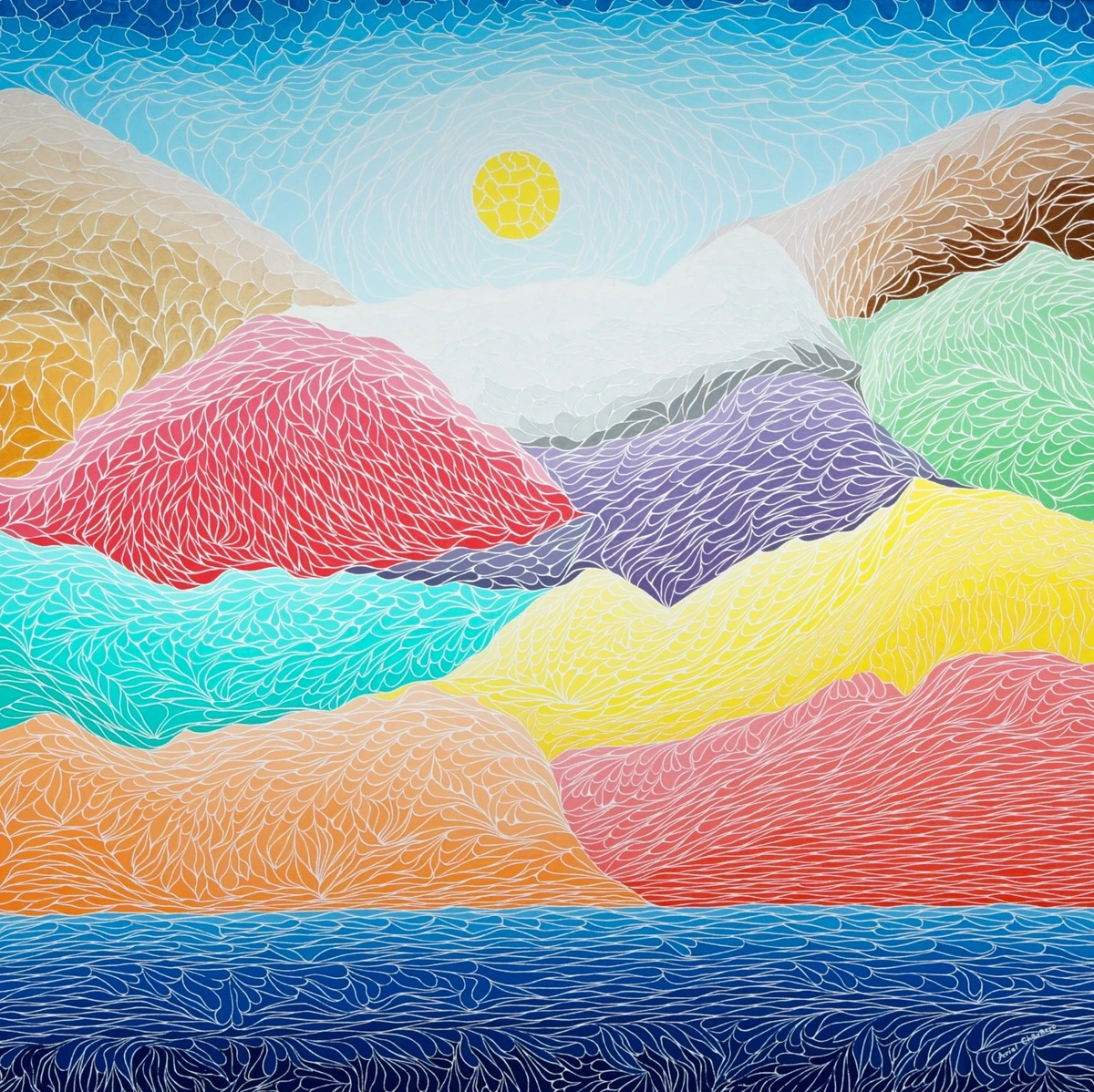
Beyond the Canvas: Practicing Your Eye and Sharing the Journey
Ready to dive deeper? Engaging with abstract art isn't just about passive viewing; it's an active process. Here are some ways to continue your journey:
- Visit a Gallery or Museum with an Open Mind: Dedicate a visit solely to the abstract sections. Don't rush. Pick one or two pieces and just sit with them. See what emerges. Exploring local galleries, like those in the vibrant art scene of Den Bosch where I'm involved, can offer surprising connections to contemporary abstract works.
- Explore Online Resources: Look up artists like Jackson Pollock, Helen Frankenthaler, or Mark Rothko. Read interviews, watch documentaries. Consider diving into art criticism or listening to artist talks online; hearing diverse perspectives can unlock new ways of seeing. Context often enriches the experience.
- Try Your Own Abstract Exercise: Grab some paper and colors. Close your eyes and think of an emotion (joy, anger, peace). Now, without trying to draw anything recognizable, try to express that feeling using only colors, lines, and shapes. You might be surprised at what you create, and it will deepen your empathy for the abstract artist's process. I remember my first attempt; I was trying to express 'frustration' and ended up with a tangle of sharp, dark lines that felt surprisingly cathartic – a clear reminder that art doesn't need to be pretty to be profound. (Don't worry, your cat might still do it better, but that's not the point!).

credit, licence
- Keep a Visual Journal: Consider carrying a small notebook or using a digital app to jot down your reactions, feelings, and thoughts when you encounter abstract art. What colors stood out? What emotions did it evoke? This active reflection deepens your engagement and helps you track your evolving interpretations.
- Practice Seeing Abstraction in Everyday Life: Start noticing abstract patterns, colors, and forms in your environment. Look at the veins in a leaf, the texture of tree bark, the arrangement of buildings in a cityscape, or the swirling patterns in spilled coffee. This continuous practice refines your eye and helps you appreciate the pervasive nature of abstract thought and design all around you. Think of the clean lines and geometric forms of Bauhaus architecture, the simplified icons and intuitive layouts in user interface design, or the bold, expressive patterns found in branding and fashion. Abstract principles are everywhere!
- Discuss with Others: Share your reactions with friends or family. Even if you disagree, the conversation itself can open up new perspectives and deepen your understanding, or simply validate your own unique experience.
- Expand Your Definition of Abstraction: Exploring artists like Christopher Wool, whose seemingly simple yet complex patterns often feature words, repetition, or stencil-like forms, challenges conventional perception by moving beyond pure form to explore ideas through visual language and the processes of painting itself. This offers another fascinating path to broaden your understanding of what abstraction can be – it's not just about shapes and colors.
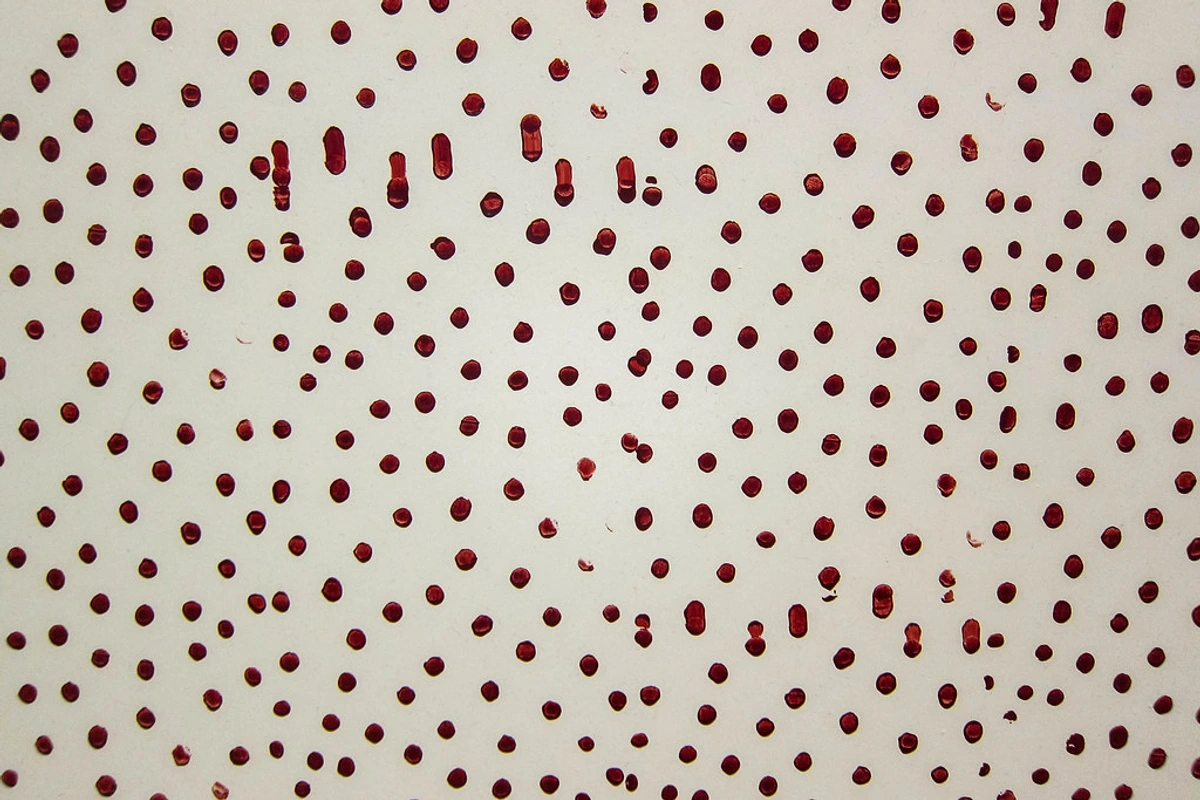
And remember, abstract art isn't just confined to traditional painting; it thrives in digital art, sculpture, textiles, and even performance, constantly evolving and inviting new forms of engagement.
Why Bother? The Unexpected Joys & Profound Value of Abstract Art
So, after all this discussion, perhaps a fundamental question still lingers: why bother with abstract art at all? Is it just for art critics or those 'in the know'? After years of sometimes struggling, sometimes embracing, and always learning, I've come to see the profound value in abstract art. It's a space where rules are bent, emotions are raw, and interpretation is fluid. It challenges us to look beyond conventional notions of beauty, to find profound aesthetic value not in perfection or clear depiction, but in the raw power of color, form, and emotional honesty. This freedom isn't just for the artist; it's a gift to the viewer, allowing for a deeply personal and unburdened connection. It truly opened my eyes to the power of art beyond literal representation and helped me understand the broader landscape of modern art.
Beyond the immediate sensory experience, engaging with abstract art cultivates several valuable skills and perspectives:
- Fosters Intuition and Emotional Intelligence: Without a clear narrative, abstract art forces you to lean into your gut feelings. It hones your ability to respond to visual cues on an emotional level, deepening your understanding of your own internal landscape and how art can tap into universal human emotions.
- Enhances Critical Thinking and Problem-Solving: Far from being "random," abstract art often presents complex visual problems that the artist has resolved. For the viewer, it encourages a different kind of critical thinking – not about what it is, but how it communicates, why certain elements are placed, and what visual dialogues are happening.
- Promotes Open-Mindedness and Adaptability: Encountering art that defies conventional logic trains your mind to embrace ambiguity, to find meaning in unexpected places, and to be comfortable with interpretations that are personal rather than prescribed. This adaptability extends beyond the gallery, encouraging a more flexible approach to life's complexities. And surprisingly, the influence of abstract art extends far beyond the canvas, subtly shaping our everyday visual world in fields like product design, architecture, and fashion, proving its pervasive relevance.
- Provides Unique Insight into Cultural and Philosophical Shifts: Abstract art emerged from profound societal changes. Understanding its motivations allows you to grasp deeper cultural currents, philosophical movements, and the enduring human desire to express the inexpressible.
And frankly, it's quite liberating to finally admit that sometimes, even now, after all these years, I still stand before a piece and think, 'Okay, I'm not entirely 'getting' this one,' but I can still feel it – a personal triumph of letting go of the need for definitive answers. It reminds me that not everything needs a neat explanation. Much like life itself, some experiences are simply meant to be felt, absorbed, and responded to on a deeply personal level. There's a freedom in that, both for the artist in creation and for the viewer in interpretation. As an artist myself, creating my own colorful and often abstract art prints and paintings, I often find inspiration in this very freedom – the ability to convey a mood or an idea without being bound by strict realism. I remember one piece I was working on, initially just a play of blues and grays, intending to express a calm moment. But as I layered, an unexpected streak of fiery orange emerged, defying my initial plan. Instead of fighting it, I leaned in, and the piece transformed into something about the quiet strength found amidst turmoil – a meaning I hadn't consciously intended, but which the process itself revealed. This taught me to trust my intuition more as a creator, to let the brushstroke lead and discover the meaning rather than impose it from the start. It's a challenging but incredibly rewarding journey. Perhaps you'll find the same joy as you explore more! You can see more about my own artistic journey and timeline if you're curious, or even find a piece of art for your own space.
How to Distinguish 'Good' Abstract Art
While "good" is ultimately subjective and deeply personal, generally, "good" abstract art often demonstrates:
- Intentionality: The artist clearly made deliberate choices in composition, color, and technique, even if the process seems chaotic. It feels purposeful, not accidental. I used to think a Jackson Pollock was just random drips, but then I learned about his dance around the canvas, the controlled energy – it completely changed my perception.
- Balance & Harmony: Even when chaotic, there's an underlying sense of balance, tension, or harmony that makes the piece feel cohesive and thought-out.
- Emotional Resonance: It evokes a feeling, a mood, or a strong reaction in you. It moves you in some way, even if you can't explain why. I remember standing before a Mark Rothko for the first time, and it was like being enveloped in a profound silence I hadn't known I needed.
- Originality: It brings a fresh perspective or uses elements in a compelling, unique way, often pushing boundaries.
Ultimately, if it resonates with you, if it makes you pause, think, or feel, then it's "good" for you. I remember standing before a piece I initially dismissed, a jumble of lines and muted colors, but its sheer intentionality and the way it subtly shifted my mood eventually made me realize, "Ah, this is good art for me." Don't let anyone tell you otherwise!
FAQ: Your Burning Questions Answered
Still pondering some aspects of abstract art? Let's tackle some common questions head-on:
What is the point of abstract art?
The "point" varies for each artist and each piece, but generally, abstract art aims to express ideas, emotions, or aesthetic principles through forms, colors, and lines, rather than depicting recognizable objects. It invites viewers to engage emotionally and intellectually, forming their own unique interpretations. It can be a powerful way to explore universal themes or pure visual harmony. For me, it's often about the feeling it leaves you with, long after you've walked away – a lingering resonance that realism simply can't capture.
Can abstract art be meaningful without a clear subject?
Absolutely! Meaning isn't solely confined to literal representation. Music provides a perfect analogy: a powerful symphony conveys profound meaning and emotion without depicting a single concrete object. Similarly, abstract art communicates concepts like peace, chaos, joy, or solitude directly through its visual language. The meaning, in this context, often arises from the dynamic interaction between the artwork and your unique personal experiences and feelings. It's a dialogue, not a monologue. My own experience with Rothko's color fields is a testament to this – no subject, just pure, overwhelming emotion.
Is there a "right" way to interpret abstract art?
In my experience, no. The "right" way to interpret abstract art is your way. Unlike representational art, which often has a clear subject or narrative, abstract art is designed to be more open-ended. It invites you to bring your own experiences, emotions, and imagination to the viewing process. While understanding the artist's intent or historical context can enrich your experience (as discussed in Tip 2), it should never dictate or invalidate your personal response. The beauty lies in its subjective nature and the unique connection each viewer can forge. I used to agonize over 'getting it right,' but then I realized the true joy was in letting go and just letting the art speak to me, in its own abstract way.
What's the difference between abstract and non-objective art?
While often used interchangeably, there's a subtle distinction. Abstract art typically starts with a recognizable subject from reality and then distorts, simplifies, or exaggerates it (e.g., Mondrian's early trees). The original source, however altered, is still discernible. Non-objective art, on the other hand, does not refer to any external, recognizable object or reality. It is purely about form, color, line, and composition, existing entirely on its own terms (e.g., Mondrian's later grids, many Rothko paintings). Think of it like this: all squares are rectangles, but not all rectangles are squares. So, all non-objective art is abstract, but not all abstract art is non-objective.
What are some major movements within abstract art?
Abstract art is a vast and diverse field, encompassing many distinct movements, each with its own focus and philosophy:
- Abstract Expressionism: Emerged in the 1940s-50s in New York, emphasizing spontaneous, automatic, or subconscious creation to express inner emotions and universal themes (e.g., Jackson Pollock, Mark Rothko).
- Geometric Abstraction: Focuses on non-objective shapes like squares, circles, and lines, often in precise, non-representational compositions, seeking universal harmony and order (e.g., Piet Mondrian, Kazimir Malevich).
- Lyrical Abstraction: A more spontaneous and expressive form of abstraction, often characterized by fluid forms, soft edges, and a painterly approach, aiming to evoke poetic feelings or musicality.
- Color Field Painting: A subset of Abstract Expressionism, focusing on large fields of solid color, often stained or washed onto the canvas, to create an immersive, meditative, or spiritual experience (e.g., Mark Rothko, Helen Frankenthaler).
- Minimalism: Developed in the 1960s, it stripped art down to its essential, simplest forms, often using geometric shapes and industrial materials, removing any subjective interpretation or overt emotion.
These movements represent just a fraction of the diverse approaches artists have taken to explore the boundless possibilities of abstraction.
Conclusion
Interpreting abstract art isn't about memorizing art history facts or deciphering hidden codes. It's about opening yourself up to a different kind of visual conversation. It's about daring to feel, to imagine, and to trust your own instincts. So next time you're faced with an abstract painting, instead of asking "What is it?", try asking "How does it make me feel?" or "What does it remind me of?". Perhaps, like me, you'll find inspiration to explore more beautiful art for your own space, or even create something yourself. What will your next abstract encounter reveal?




